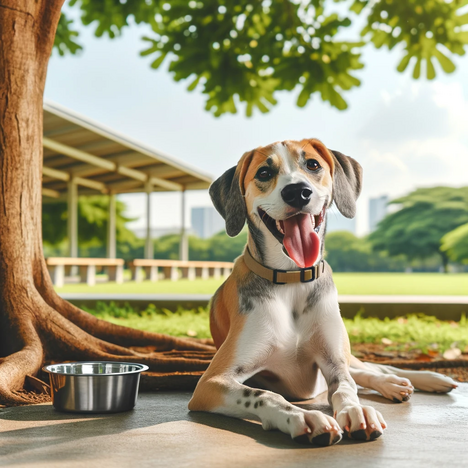Attribute "Heat resistant"

Heat-resistant dogs: what does it really mean?
As a dog lover, you certainly know that our four-legged friends have very different needs and characteristics. One of these characteristics, which is particularly important in the hot summer months, is heat resistance. But what exactly does it mean when a dog breed is described as heat-resistant? In this article, we get to the bottom of this question and explain which traits and behaviors contribute to a dog's ability to cope with high temperatures.
What does "heat-resistant" mean?
Heat-resistant dogs are breeds that are genetically and physically better adapted to warm climates. This means that they are less susceptible to heat stress, heat stroke and other heat-related health problems. This adaptation can manifest itself in various physical and behavioral traits.
Physical characteristics of heat-resistant dogs
Coat structure and density
Coat structure is a crucial factor. Dog breeds with a thin, short or wiry coat tend to tolerate heat better. This coat insulates less and allows more air to reach the skin, which regulates body temperature. Examples of such breeds are the Dalmatian, the Basenji and the Whippet.
Body size and shape
Smaller dogs or those with a slim, muscular build have a larger skin surface area in relation to their body volume. This allows them to dissipate heat better. Sighthounds such as the Greyhound or the Azawakh are good examples of such breeds.
Muzzle shape
Dogs with longer muzzles have a more effective airway structure for cooling the inhaled air. In contrast, brachycephalic (short-snouted) breeds such as the Pug or French Bulldog often have difficulty regulating their body temperature.
Behavioral characteristics and adaptations
Activity level
Heat-resistant dogs tend to be less active in high temperatures. They adapt their behavior by resting during the hottest times of the day and shifting their activity to the cooler morning or evening hours.
Water intake
Another important behavior is increased water intake. Dogs that drink enough water are better able to regulate their body temperature by panting and sweating through their paws. So always make sure your dog has access to fresh water, especially on hot days.
Care and precautions
Regular brushing
Even if heat-resistant dogs can cope better with the heat, it is important to brush their coat regularly. This removes excess hair and ensures that air can reach the skin better. However, avoid cutting the coat too short as it also provides protection against sunburn.
Cool retreats
Make sure your dog always has a shady and cool place to rest. This can be a shady garden area, a cool tile in the house or even air conditioning.
Avoid intense activity
On particularly hot days, it is advisable to avoid intense activities such as running or playing in the blazing sun. Instead, you can challenge your dog mentally, for example by playing search games in the house.
Conclusion
The heat resistance of a dog breed depends on a variety of factors, from coat structure to body shape to specific behavioral adaptations. By understanding the needs of your heat-resistant dog and taking appropriate measures, you can ensure that your four-legged friend stays healthy and happy even during the hottest months of the year. Always be aware of the signs of heat stress and provide appropriate care to give your dog the best possible conditions.

